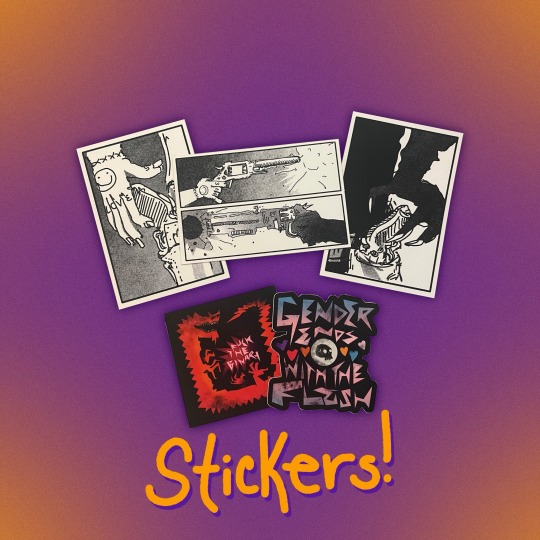#WyrdRPG
Explore tagged Tumblr posts
Text
Wyrd RPG Blog Post #2 - Combat Discussion

Hey Hero! Check out the much improved lettering of the name lmao.
Welcome back! This time were discussing the Combat mechanics and what has been worked on so far. Some things are in better spots than others, but everything is open to criticism. Everything is subject to changing as review and testing occurs.
We're going to be covering a lot, prepare! Just as a reference for what I'm going to be talking about today:
Asymmetrical Combat (PvE, PvP, GM and Players)
Health Systems (Core, Health, Armor, and Magic Protection)
Defining Enemies (Minion, Elite, Champion, Boss)
Phases of Combat (Move!, Fire!, Fight!, Plan!)
Grouping (For Friend and Foe, Individuals or Squads)
Player and Foe Actions
Combat for this system has a very large amount of influences, but you can expect turn orders to play like a war game may. This has been a very interesting thing to try and adapt to a TTRPG combat system, as I quickly figured out why you don't often see tactical/squad based gameplay in RPGs. Regardless, we're going to try our best anyways.
Asymmetrical Combat
It's important to understand right away that the design behind the combat is that GM's take on a largely different role in play than the players do. Players control their Champions in a much more specific and detailed way than most creatures the GM is responsible for, specifically in PvE, which will be the intended way to play.
Player Characters have access to Effort, a plethora of abilities and items, and a custom understanding of how to operate their character. At the head of the table, the GM has a much more simple task in playing the monsters. I wanted the GM side to foundationally be scalable from small encounters to massive battles without much change required in how things are played. As anyone who has played more than a couple sessions of any TTRPG with combat in it, it can be really slow.
I don't want to rush the players, but I do want most of the time to be spent on their decision making and thoughtfulness. The game is aimed to be a little more difficult than others and discourage direct fighting all the time, not without tipping the scales first anyways, so naturally the players are encouraged to be genuinely thoughtful.
As for PvP, I currently don't have the desire to incorporate PvP into the balancing process of enemy types, champion abilities and equipment, etc. This is an RPG first and foremost with war game style combat that's focused on the players. I don't see myself ever wanting this to be a competitively viable project, but a cooperative one most definitely. Doesn't mean I won't change my mind later though!
Health, for Friends and Foe
For Player Characters, Health has a bit more going on and is broken into 3 distinct categories, Armor, Health, and Core.
Armor Pips (AP): Like a standard Health Pip, but it has it's own armor save of at least Armor 2, up to Armor 5, determined by the equipment of the character. Once they run out of Armor Pips, damage defaults to Health Pips.
Health Pips (HP): Your flesh and blood, typically takes damage directly without intervention. If unarmored, be very careful! Once you run out of Health Pips, any damage goes to Core.
Core Health Pips (CHP): A small number representing your resistance to fatal damage. When taking damage at Core, all incoming damage is reduced to 1. This represents great injury or mental anguish. Healing Core Wounds takes a long time, and when you run out of Core, you die. Most characters have at a minimum 2. Protect it well!
There was originally an idea for another layer of armor called Magic Armor Pips, but after further ideation were later moved, as Armor Pips had changed quite a lot from first conception. Now Magic Protection is going to be a type of spell ability to allow different types of mechanical advantages to occur that deny damage from going through. Armor Pips were originally going to work the same for Foes as well, but when testing on a larger scale, it got to be way too difficult to determine how groups take damage where and when, so a more simplistic design was created in attempt to remedy this. This actually has worked out so far, because Asymmetrical Combat and GM ease of management are big goals of the design.
For Foes, it depends on how they're defined.
How Foes are Defined
Minion / Grunt / Gribbly - The "Bandit Sniper" "Skeleton Swordsman" "Gob Thug", the nameless guys who populate dungeons and typically exist more in numbers. They can have specializations, but are ultimately disposable. Typically with limited action choices, d6 table outcomes, and basic fighting styles. They don't worry about managing Effort (just get exhausted after some time).
✴ no Effort maintenance, no Core, base Armor #.
Elite - A step up above, often found as particularly capable leadership for Minions, but also in small groups to form dangerous Elite squads. They have a broader selection of abilities usually requiring some strategizing from the GM. Actions are more advanced and may involve more GM focus, but doesn't require managing Effort. Elites have Core HP and can React.
✴ no Effort maintenance, but wider range of actions, and they do have Core, still Armor #. (Armor # doesn't apply to Core)
Champion - Equal complexity to the players in some regard. Player Characters may face opponent Champions. Not frequent in a fight and can be viewed as a "mini-boss" of sorts. Effort will need to be managed by the GM and Health will behave the same as players. (Core HP, HP, Armor)
✴ very similar to Player Characters in complexity, same Health system AND Effort maintenance.
Hero/Boss - Behave in rules beyond what's available to players. The scale of them varies, but their defining factors are usually unique abilities not seen elsewhere in the game specific to the unit. Some abilities or actions stretch beyond what is otherwise mechanically possible within the game, primarily for fun, lore flavoring, or to express otherworldly power. Huge BBEGs or characters "Achieving Daemonhood" type stuff, so special occasion things.
✴ a step beyond normal design, allowed to break some rules to provide unique challenge and/or flavor.

Combat Battle Phases:
Alright! This is the more War-Gamey part of the combat system. Fans of Warhammer will likely notice similarities. There are currently 4 Distinct Phases for Combat:
Move! (positioning, determining engagements)
Fire! (ranged abilities and attacks)
Fight! (melee abilities and attacks)
Plan! (time for decision making, grouping, or bailing)
A turn begins at Move!, which is Regen applies. Effort must be carefully maintained through each round. At the beginning of each phase, participating group of combatants must Roll Off to see who has priority.
Roll Offs
Each acting unit rolls a d12 to determine turn order for each phase to determine in what order things happen. For all phases, the lower number goes first, then the next, and so on until the lowest.
Winning a Roll Off means you have Priority, which looks a little different each Phase.
Move!: When you have Priority on Moving, it means you as a Player can elect to Move or React. If you end your movement in proximity to a Foe, you are considered to be Engaged, where neither can leave without first attempting to Disengage. If you want to lock someone up in a fight where they are, that's the time to Go. If you want to wait and React to what a Foe does before you Move, you can put yourself behind them in turn order so you can Move afterwards.
- If you're the target of a React, you cannot React and must Move! (I don't love this one, but I don't want players to feel punished by moving first, then another enemy moves out of range) - Minions cannot React, but Elites and up can. - Critical 1's on Move! Roll Offs grant extra movement. 12's cannot React, even to other 12's.
Fire!: Having Priority on Fire! means your ranged attack goes off before someone else's. In a shootout with multiple combatants, this could mean your shot interrupts or takes out a Foe before they can Fire their attack.
- Unique to Fire! is the Cover mechanic. Cover utilizes terrain pieces of different sizes, determined by the GM of giving Cover 1-4, acting as a secondary armor save. Fire! targets that decided to Hunker Down get an additional Cover 1. - Critical 1's on Fire! give you an auto-success on your next action.
Fight!: Units Engaged in a Fight! roll for Priority to see who gets to hit first and who defends, followed by a reversal.
- Previously, the Fight! System was the Roll Off determines who is on the offensive and who is on the defensive, meaning there was an Attacker and Defender and that was it. This lead to cool interactions of one party being on the defensive or have dramatic back and forth, but quickly fell apart in encounters where multiple combatants were fighting, so a more traditional wargame "my turn your turn" is something I'm going to try for now. It currently forces a lot more energy usage from the champions than the previous iteration, but I don't hate that.a - Critical 1's on Fight! Give you an auto-success on your next action.
Plan! doesn't Roll Off, this is just time for thinking and changing things up. Namely, reconfiguring grouping or bailing on the fight.
When you decide to Bail!, you and your party escape the encounter. I currently haven't set up any mechanics for how this works, as it's yet to be something people wanna do in basic testing. I'm currently debating between letting it be an easy out but with immediate penalties, or setting up a more complex mini game of trying to escape that may lend to a chase. Regardless, I don't want players to ever feel trapped in an encounter they know they don't wanna do anymore. It's purely unfun.
Last note on Roll Offs, I'm currently experimenting with an character mechanic called Speed, which would affect Roll Off successes. I'm either going to make it a Stat for characters to build or not, or make it a property of actions/weapons/traits, or a third option I haven't thought of yet.
Character and Unit Grouping
As combat is designed to be scalable with the size of the engagement, the grouping of enemies may change. In the beginning of a character's career, it may be common for the Party to fight a number of opponents approximate to their party total. For contained instances like this, having each unit act independently or maybe in pairs is fine.
However, enemies may appear in larger numbers or be working together more strategically. Player Characters may also have their own minions or companions to manage and running them all separately is just too much slog. Before any encounter or during Plan!, you can revisit squad configurations and Group Up or Split Up as makes sense to the table, as long as units are able to make the changes happen, such as being in relative proximity or have some form of communication from distance.
In cases like these, say you have 4 town guard under the command of a character, you'd roll them together as a single acting unit. 1 Roll Off die for all 4 as they act cohesively, Move or React all together, 4d6 to determine attacks and defenses, etc.
During Plan!, you could decide to split up those guard and give two to an ally. Or regain control of all 4 again. You could pair up with another Champion to ensure you act together at the same time during your phases if you have something planned.

Foe Actions
Minions and Elites, the bulk of what Player's may encounter, play very simply. Champions and Bosses are more related to players actions, but will be explored further on in a future post.
On a Minion and Elite level, their Attacks and Defenses are prepared on a d6 table for each action that the GM simply has to pop a d6 on to see how they behave.
Let's look at this Gob Thug. Whenever it's their time to Fight!, the GM will roll a d6 to determine their outcome depending on if they're in Defense or Offensive stances. If there are multiple of the same unit in the group, you can roll multiple d6 to determine them all. Here are examples of some abilities minions may have.
For Attacking, Spiked Mace:
1 - 1 Damage w Crush 1
2-3 - 1 Damage
4-6 - Miss
Short Bow:
1 - 2 Damage
2-3 - 1 Damage
4-6 - Miss
For Defending, Wooden Shield:
1 - Block 2
2-3 - Block 1
4-6 - Fail to Block
Basic Weapon Block:
1-2 Block 1
3-6 Fail to Block
Player Actions
An Action on the Player side requires Effort to complete to determine how well the task is performed, unlike a simple pop of a d6. Primarily, this is for things that require some Skill or Attribute to perform, like making an attack with a particular weapon, disengaging from a fight, performing an ability, etc.
The inspiration behind this system is Pathfinder 2E's Degrees of Success, of Critical Fail, Fail, Success, Critical Success. However in this, there isn't critical failure, and the highest success result written is considered the best or "critical" success.
By default, totaling below the minimum successes needed on a roll means total failure, you did not do what you intended. It simply fails. Some actions can specifically mention consequences of failure or change the cost of success around depending on the nature of the action. Some actions could even include failure as one of the lower results or as a result of overshooting.
Additionally, so far in the default, we've been doing 3 basic degrees.
For example, a plain Short Sword may look like this:
Slash
1 Success: 1 Damage
2-3 Successes: 2 Damage
4+ Successes: 3
Damage
Pommel Strike
0-1: Miss, Trigger Target Riposte
2: 1 Damage, Crush 1 (Reduce Target Armor)
3+: 2 Damage, Crush 1
Weapons as a basis are currently thought having some basic actions that come with it with fixed outcomes. They're not restricted to this, think of them more as a template. You can alter the success requirements, add more outcomes, add new attack types for the weapon, give it custom properties, and so on.
There is still a strong spirit of "can I do this?" available in the game. My partner is a fan of flipping or throwing furniture on enemies during testing, which grants them cover or improvisational damage. For these instances, I've just been asking for "Toughness Checks, 1-3 successes" depending on what they're trying to move.
Wrap Up
This is everything done for Combat so far, I'd love to hear your thoughts!
I know it was a lot so I appreciate you reading up, just a lot to get caught up on as I'm starting this documentation process a bit after the fact.
The next post is going to cover Character Creation, attributes, skills, and current stat ideas I'm playing with. Moving forward from this post, things will have a much more exploratory and uncertain tone as I'm sharing more so my less polished ideas, which I hope encourages more discussion in the future from anyone with their own ideas or concerns!
Thanks for reading Hero (:
See you in the next one!
Woe <3
#digital illustration#fantasy#monster art#rpg art#indie rpg#ttrpg art#ttrpg#devlog#woelock#woecore#WyrdRPG#dnd#pf2e#pathfinder#indiedev
4 notes
·
View notes
Text

Wyrd RPG Blog Post #1 !!! - Introduction to my Project
Hey Hero (: Thanks for taking a look! If you'll have me, I'd like to share a TTRPG (tabletop roleplaying game) project I've been working on for a bit after finally taking a plunge, and I wanted to document it in a fun way. So far, it's been about 2+ weeks of brainstorming and prototyping with my partner, so we're talking super early stuff.
Quick important foreword please read, I don't want anyone confused! I am exploring designing an RPG as a way to express my art, but I am not a professional game designer and can not promise this will become a full, polished, amazing new RPG at the end of the process. That'd be super sick, but this is primarily just a creative way for me to document exploring my interests of game design and writing alongside my art. I've wanted to do something more long term and dreamed of playing an RPG in my own art world, and no ones gonna try to make it but I.
TLDR: No promises of an actual game. Exploring for fun, documenting to share. Yay!
Now on to the post!
In this first post, I wanted to talk about my design goals, scope, expectations, and what I'm looking forward to so far!
Major Design Goals:
A singular core dice system of d12's being the most used die to determine the success of actions and their outcomes.
Player Characters take on the roles of Aspiring Champions, adventurer-types that wish to make a name for themselves. You are what you do. Your actions, the skills you focus on, and the people you walk with all have an impact on who you become as you grow in power and status.
Asymmetrical combat for GM's and PC's. Player Characters have a much deeper experience
Provide the tools needed for GM's and Players to create custom "home brew" content for their games based on templates so they grounded to the system but unique to the player.
Encourage GM and Player collaboration as much as possible
Classless Characters, characters comprised of Skill Levels and Traits that make up their core identity and capabilities. No EXP, No Levels. Character progression is awarded through play and during the Downtime Phase.
Different modes of play to break up the pacing of a game, examples being Combat, Exploration, Downtime, Social, and Meta.
Quick and lethal combat experience. Fighting directly isn't always the best solution, clever action to shift the odds more in your favor should always be preferred.
Dang Woe, that's pretty ambitious.
Uhh yeah lol. I tried to imagine my dream game for my art and it came out huge. I think it's just gonna be fun to try and explore a lot of different things and learning how to "gamify" things. Digital game dev has just too many barriers for me to explore, but I know my way around a TTRPG! I can't imagine having all these ideas written into mechanics and tested and everything flowing perfectly, but it's gonna be fun to try.
d12 System Yeehaw
The biggest thing I want to cover right away in this post is explaining the d12 action die pool system and how they work. Every Player Character will have a pool of d12s that make up your Effort.
What is Effort? Effort is your "action points," your Stamina, your Energy. You can give something your all, but you can't do it all the time. Effort is broken down into Regen, Stored, and Exhausted, which will be explained later in this post.
Internalize this now before moving on, in the context of rolling dice, 1 is good. 1 is the new slay. 1 is best number. You now love small numbers. When you come to a WyrdRPG post you will be pavloved into remembering 1 is best ever.
Your skills come into play when rolling your Effort. They determine what numbers on the dice count for successes and which do not. Skills lie on a scale of 1 to 10, 1 being an absolute beginner and 10 being a renowned legend. Skills are displayed as "Skill #".
ex. Small Blades 8 is a decorated Knight known for their sword and shield mastery. They strike reliably and true.
ex. Small Blades 4 is an amateur or a young mercenary. They are competent and can cause deep wounds, but are far less reliable and strong, and thus require more effort to do the same damage.
Actions in this game have their outcomes determined by how many successes turned up in an effort roll. The max amount of successes you can get is up to how much effort you put in. As a brief example, if you want to swing a sword and have Small Blades 4 as a skill, every die you roll needs to have a 4 or lower to count as a success towards the outcome.
The fun part, 1's are Crits! They count as two successes!
You roll 5 Effort dice. You get 1-3-4-6-10. 1 counts twice, then 3 and 4, for a total of 4 successes. Gonna be a big hit!
12's aren't critical failures. They don't count against you or anything, unless something says otherwise. I'm currently thinking if you use a tool or item that's "broken" or "malfunctioning" then maybe that could apply. Could be cool idk!
Effort Explained More
Last important piece of this heartbeat is Regen, Exert, and Exhausted, the 3 states of Effort. Regen will show up like Regen 3 or Regen 4, meaning you have that number of Effort dice that cannot become Exhausted. You always get these back.
Exert is exhaustible Effort, that if used in addition to your Regen die as all must be used first, will be moved to Exhausted. You cannot use these dice until they are restored. In order to restore Exhausted dice, you have to underspend your Regen dice. For every Regen not used during a round, one exhausted is returned to Exert.
The idea behind this neutral-exert-rest flow is to give more long winded battles a chance to shift and provide risky opportunities to gamble a rest or full-sending an attack with more effort than you probably should, but you really wanna be sure you get this guy.
I appreciate you reading, I'm really curious to hear some of your thoughts as things are moving along. I have a lot of ideas for art and I think regardless of how this goes there's going to be something cool from it!
Okay bye hero!
Yours,
Woe
#fantasy#digital illustration#artists on tumblr#ttrpg art#ttrpg#rpg#indie rpg#illustrative art#woelock#woecore#WyrdRPG
4 notes
·
View notes
Text






Well, well! Long time no see! I’ve been busy doing a couple projects in addition to the WyrdRPG, so that took a back seat for a bit while I collaborated with @catnoli to be a guest in their shop drop this weekend!
I’ve made my own shark postcards (fashionably wyrd, of course) as well as a lot of my other recent works and some stickers!
I’d be honored if you took a look. Thank you for your time!
#digital illustration#fantasy#rpg art#ttrpg art#woecore#woelock#indie rpg#THAT SHARK IS WEIRD#WYRD#HE’S WYRD! STOP HIM#I LOVE YOU FOR READING MY TAGS UR A HOMIE#unless…#SHARK
5 notes
·
View notes